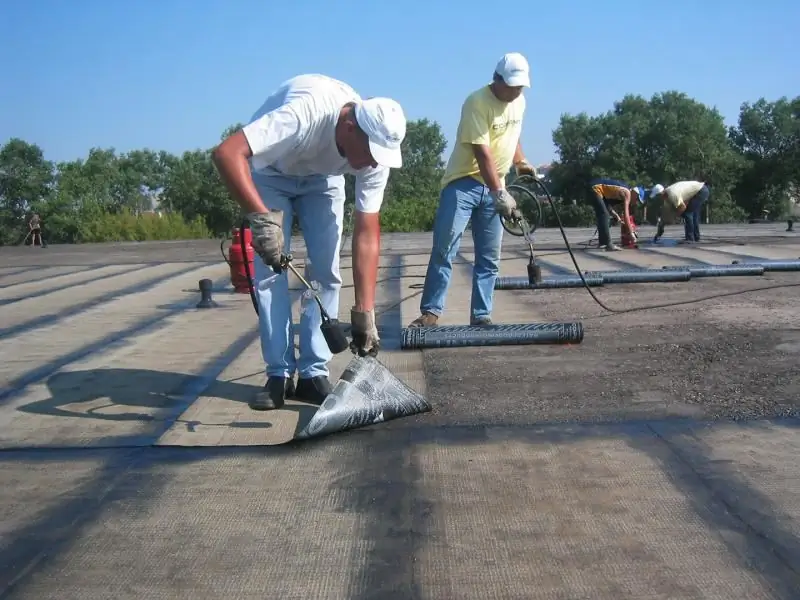
Table of contents:
- Author Bailey Albertson [email protected].
- Public 2023-12-17 12:53.
- Last modified 2025-06-01 07:32.
Roll roof repair: preparation and step-by-step instructions

Roofing rolls are popular for their ease of installation. They are most often used to protect flat roofs in private and urban construction. But, despite the durability of modern materials, roll roofs also require periodic repairs. Especially if the coating was laid in violation of technology.
Content
-
1 Types of roll roofing repair
- 1.1 Emergency repair
- 1.2 Maintenance
- 1.3 Overhaul
-
2 Preparing for repair
- 2.1 Inspection of the roof
- 2.2 Materials for repair
- 2.3 Required tools
-
3 Soft roof repair technology
3.1 Video: overhaul of a flat roof using a welded roofing material
- 4 Safety during work
-
5 Stages of roofing repair from roll materials
- 5.1 Dismantling the old coating and repairing the base
- 5.2 Installing the first layer of insulation
- 5.3 Installation of insulation and creating a slope
-
5.4 Installation of bitumen roll coating
5.4.1 Video: detailed instructions for performing a soft roof at each stage
-
6 How to perform emergency repairs
6.1 Video: removing blisters on an old roll roof
Types of roll roof repair
Leaks are the main sign of serious damage to roofing. They must be removed at an early stage, otherwise the penetrating moisture will damage the insulation layer, walls and the supporting structure of the roof.

Cracks and bulges are the main problems that occur on a roof carpet during prolonged use.
Typically, leaks appear due to errors in the process of installation work associated with both the preparation of the base of the roof surface and the technology of laying the roll cloth. And the type of repair will depend on the extent of the damage.
Emergency repair
If urgent elimination of small defects on the surface of the roof is required after a large hail, thunderstorm fire or any other sudden incidents, then emergency repairs are carried out. Timely restoration of the roof covering stops the penetration of moisture and eliminates the cause of possible damage to the building.

Emergency roof repair is performed in all cases when urgent elimination of damage leading to leaks is required
Emergency work includes the following actions:
- inspection of leaks and diagnostics of the condition of the roof;
- repair of the coating with patches and mastic;
- cleaning and processing of the rafter system with antiseptic compounds;
-
sealing of junctions and seams between the sheets of the roll coating.

Peeling of the edge of the roofing sheet Delamination of the edge of the roofing sheet leads to a hidden leakage of water under the coating layer
Such repairs are carried out when 5-10% of the total area is damaged, but in some cases it can affect up to 40%. This prevents further damage to the entire roofing sheet, extending its service life until scheduled repairs are completed.

It is important to carry out local emergency repairs in a timely manner to avoid more serious consequences if the roofing is broken.
Maintenance
Current local repair of the roof eliminates small punctures, cracks, gouges, delamination, swelling and other defects by applying patches of bitumen-roll material.

Local repairs on roofing are carried out within a day after the detection of blisters, which allows you to quickly eliminate such violations
This type of repair is planned and carried out as a prophylaxis at specified periods during the entire operation of the building. It is aimed specifically at the restoration of the roofing sheet.

Routine repairs include replacing leaky and heavily damaged canvases
Preventive repair of rolled roofing involves the following types of installation work:
- scheduled inspection, replacement of the roof section;
- replacement of damaged parts of the supporting roofing system;
- restoration of sealing of connecting seams;
- cleaning and partial repair of the drainage system.

Current repair allows you to eliminate the damaged part of the roofing without bringing the building to a problem state
Such work is ideal for pitched roofs covered with modern analogues of roofing material. In the spring, on the old canvas, defects obtained during cleaning of the roof are clearly visible. They are insignificant, so for repair it is enough to prepare the damaged area in the right way and cover it with a slightly larger patch.
Overhaul
According to SNiP II - 26-76, overhaul of the roof is carried out when more than 40% of the coating is damaged. And only by qualified specialists.

When performing a major overhaul, the old roof covering is completely dismantled
The procedure for overhaul of a soft roof consists of the following works:
- Dismantling the old coating.
- Cleaning and processing of the working surface for further installation.
- Laying of new waterproofing and thermal insulation (if the old thermal insulation layer is not under the mortar screed).
- Preparation of junctions with the main roof nodes: vertical ledges, drain funnels, etc.
- Installation of bitumen roll coating.

Overhaul of the entire roof takes longer, but at the same time the roofing is completely renewed
Saving on high-quality materials often leads to serious damage to the roof.
Therefore, it is better not to skimp on the roofing sheet, so that in the future you do not have to often remodel the roof.
Preparing for repair
Before proceeding with the study of the technology of work, the purchase of material and the search for the necessary tool, you should find out the current state of the roof.
Roof inspection
Revision of the roofing system is the first thing to do before self-repair.

Leaks and other damage to the roof are clearly visible from the attic, especially in the case of a pitched roof
For diagnostics you will need:
- Climb to the attic and carefully examine, illuminating with a bright lamp, the insulation of the roof from the inside - leaks and rafters swollen from moisture are visible to the naked eye. If the damage is old, then dark spots will be visible on the surface of the rafters.
- If there are no leaks from above, but there are traces of dried water on the floor of the attic, then you need to wait for the rain and check the inside of the roof again.
- Then examine the roof covering from the outside, observing safety precautions. A sturdy ladder is used to climb to the roof, which is held by an assistant.
Sometimes, when examining flat soft roofs, no damage is visible, but moisture still gradually flows inward.

The formation of a puddle on a soft roof indicates a violation of the slope of the surface during installation
Repair materials
The technology of construction and repair of soft roofs allows the use of various materials. Their choice depends on the construction of the roof, the current state of the roof and the previously laid covering.
Now the main material for the installation of rolled roofs are modern analogues of roofing material based on fiberglass or fiberglass. The leader in the production of bitumen roll coatings in Russia is the Technonikol corporation.

Bituminous roll coating under the brand name "Technoelast FLAME STOP" is intended for laying in places where there is a high risk of fire of buildings
Among the most popular materials are the following:
- Technoelast PRIME is waterproof: for mastic laying without fire. A composition consisting of modified bitumen, polymer additives and filler is applied on both sides of the polyester base;
- "Technoelast S" - self-adhesive waterproofing: for places where laying with open fire is impossible. Based on polymer bitumen applied to a polyester base. The face coating is an adhesive film and fine or coarse-grained dressing;
- "Technoelast FLAME STOP" is a roll roofing product with high fire-fighting characteristics: for installation in places with increased safety requirements. Bitumen is applied on both sides of the polyester base with the addition of polymer modifiers and fire retardants. Protective layer - coarse shale crumb;
-
"Linokrom" ("Bipol") - waterproofing (budget option): for the top layer of the roofing cake, and also as insulation from the side of the roof structure. Based on a rotting cloth impregnated with a bituminous binder. It is laid with a gas or gas burner;

"Linocrom" from the "Technonikol" company Linokrom bitumen roll coating is one of the most affordable materials for insulating flat roofs
-
bitumen-polymer mastics "Technomast", "TechnoNIKOL No. 41" and "MKTN" - for the installation of a new roof and emergency repair of the canvas. Compositions based on petroleum bitumen, polymer modifiers, fillers, technological additives, etc. During repairs, they are used in combination with a new roll coating: applied with a roller or spatula.

Bitumen-polymer mastic "Technomast" Technomast mastic is a versatile material that can be used for both roof repair and waterproofing of various structures.
Bituminous mastics are universal. To increase strength, the applied layer is reinforced with fiberglass. The composition is selected taking into account the technical characteristics and application temperature, if the roof repair will be carried out in autumn or winter.
If desired, you can use formulations from other manufacturers. For example, "MBU", "Icopal", "Expert". When choosing a mastic, it is important to consider the scope of application and not to confuse waterproofing compounds with adhesives.
Required tool
To carry out local repair of the roof with your own hands you will need:
- grinder with a disc for concrete;
- small ax and hammer;
- nail puller 60-100 cm long;
-
roofing knife and tape measure;

Roofing knife The roofing knife is convenient for cutting the roofing sheet during local repairs
-
gasoline or gas burner with a cylinder;

Roofing Gasoline Burner A gasoline burner is used when laying bitumen roll coatings with a hardfaced surface
-
brush and spatula;

Spatula brush and trowel A brush and a construction trowel will be needed to prepare the surface for gluing the roll coating
- brush with hard bristles;
- broom or sturdy broom.
For major repairs on a large roof, as a specialized tool, you can use: a machine for cutting an old roof sheet (roof cutter), an industrial vacuum cleaner, a roof heater, a heat gun and a hair dryer.
Soft roof repair technology
The repair technology depends on the design and condition of the coating. The sequence of actions is the same, but both the amount and nature of damage and the type of material are taken into account.
The current repair of a flat roll roof is carried out in the following stages:
- Dismantling of steel aprons in the places where the roof adjoins to the vertical wall of the parapet, air ducts and other structures.
-
Removal of roofing and damaged insulation by automated cutting or punching with hand tools.

Gasoline Roof Cutter Petrol roof cutter - special equipment that allows you to cut the old roof into small pieces, which speeds up the process of its dismantling
- Structural floor preparation: cleaning, damage repair, priming.
- Installation of steam and heat insulation.
- Creation of a slope on the roof surface towards the outlets (or drainage system) by trimming the insulation material.
- Laying first the lower layer of reinforcement around each funnel, then - the lower and upper layers of the roof covering in a strip across the entire surface (from the funnels to the parapet), and then - the upper layer in the area of abutment of the roof to the vertical surfaces.
- Installation of roofing fasteners in the area of abutment of pipes, air ducts, etc.

Violation of the technology of laying the roof covering around the drain funnel leads to the flow of water under the entire layer of the soft roof and rotting of the thermal insulation
When repairing a pitched roof, the sequence of actions remains:
- Removing the old roofing sheet and dismantling the thermal insulation.
- Repair of the rafter system with partial or complete replacement of some of the wooden elements.
- Treatment of the supporting structure of the roof with antiseptic compounds.
- Cleaning and surface preparation before installation.
- Roll coating laying.
Video: overhaul of a flat roof using a welded roofing material
Safety during work
Many people who undertake roof repairs for the first time in their lives forget about the importance of observing safety measures.
When performing repairs on the roof, you should adhere to the following rules:
- work only during the day and during the period without precipitation and fog. In winter, carry out the restoration if the roofing is relatively dry, without heavy icing;
- wear comfortable, tight clothing, shoes with non-slip soles;
-
use personal safety equipment: plastic glasses, respirator, tarpaulin gloves, apron. And also build a belt for carrying hand tools;

Laying bitumen roll coating It is better to carry out work on insulation and repair of the roof in the warm season.
- use a safety belt with a rope at least 22 mm thick (for working on a pitched roof with a slope of 16 o);
- check the functionality of all tools before lifting them to the roof. If hot mastic is used, the melting tank is supplied with a thermometer and installed in a previously prepared place.
Winter roof repair is a time consuming process.
In other cases, it is better to put everything aside until warm.
Stages of roofing repair from roll materials
Repair of a soft roof should begin with considering the possibility of capital work, since any patching will violate the original order of laying the layers and the direction of water flow.
Dismantling the old coating and repairing the base
The old roofing sheet is removed in rows. If long breaks are planned (2 hours or more), then the open sections of the roof are covered with polyethylene for this time. When removing coverings on roofs with internal drainage, the drain funnels are protected from dirt.

Dismantling of the old bitumen-roll coating is carried out using a grinder, crowbar and an ax
The sequence of work during dismantling and repair of the base:
- Cut the old blade with a grinder along its entire length. For this, a square cut of 100 × 100 cm is made, which corresponds to the standard roll width.
- Use a nail pryer or an ax to pick up the old coating, tearing it off piece by piece. You can use a bayonet shovel.
-
Use a construction vacuum cleaner or a broom to clean the supporting floor slab.

Repair of cracks on a concrete floor slab When repairing deep cracks, they should be widened by sawing with a grinder with a concrete disc
-
Inspect the slab carefully for potholes, cracks and other defects. Fill sinks and gouges up to 50 mm in size and up to 10 mm in depth with hot mastic.

Applying a bituminous primer to the floor slab After sealing the defects, the concrete slab is treated with a bituminous primer or a thin layer of mastic
- Defects up to 150 mm in size and up to 30 mm in depth should also be filled with mastic, and a patch of bitumen roll cloth should be glued on top of it. It should be 15-20 mm larger than the damage on each side.
- To fill in significant and through damage with a cement-sand mixture with the addition of fiberglass.
- Observe the evenness of the filling according to the building level: the maximum clearance between the tool and the filling layer should not exceed 5 mm.
Laying the first layer of insulation
After the patches have hardened, you need to prepare a primer bitumen for priming concrete substrates.
The technology for creating the first layer of insulation - step by step instructions:
- Apply the primer to the prepared base using a long-handled roller, spreading it over the surface in an even layer.
- Place a waterproofing sheet with a self-adhesive surface of 500 × 500 mm in the area of the internal drain. The edge of the first sheet should overlap the drain.
-
If weldable insulation is used, then first the sheet should be rolled along its entire length, then rolled up to the middle, and then glued on with the help of a torch. Lay the second part of the canvas in the same way. You need to heat the roll with smooth movements from one edge to the other.

Fusing a roll covering onto a parapet of low height Boards and parapets of low height are insulated only after laying the covering on the horizontal surface of the roof
- Lay the next rows with an overlap of 10-15 cm relative to the previous one. When sealing the seam, the heated bitumen should flow out of the joint. If the bitumen is flowing strongly, it can be trimmed with a spatula.
- The entire length of the soft roof connection with the vertical surface of the parapet should establish transitional rim of the heater 45 to a height of 10-15 cm.
-
After installing the sidewall, prime the vertical surface of the parapet with a bitumen primer, lay the roll cloth on the interface so that the material goes onto the horizontal and vertical surfaces (overlap of at least 15 cm).

Parapet insulation with roll coating Parapet insulation is carried out to a height of 30-40 cm with the overlap of the last sheet on the roof surface
- Insulate the parapet with a weld coated coating to a height of 35-40 cm: put the roll on an iron pipe or round stick and carefully roll it up from the transition edge, being careful when heating.
Installation of insulation and creation of a slope
Thermal insulation is an important part of the job in creating a soft roof for any heated building. It must be performed sequentially:
- On the waterproofed surface, lay a vapor-permeable film with an overlap of 20-25 cm on the walls of the parapet. On the film, lay a heat-insulating material in slabs: extruded polystyrene foam or mineral (basalt) wool of the appropriate density.
-
Put the second layer of insulation with an offset of the joints relative to the bottom layer by 20 cm.

Flat roof insulation scheme It is important to correctly lay the insulation boards, observing the displacement of the joints of the two layers.
- If a soft insulation is used (or is laid in a dense, but too thick layer), then a reinforcing steel mesh with a 10 × 10 cm mesh should be laid on top of it to ensure rigidity. Install linear guides from a special profile on it to a height of 7-10 cm. When installing, it is important to observe a slope towards the internal drain or gutters. In this case, it is imperative to make a concrete screed along the grid (cement + crushed stone + water), and not mortar (cement + sand + water).
- Mix concrete based on M300 cement: it is better to use a concrete mixer with a capacity of 150-300 liters. Before pouring, plug the gutter with scraps of thermal insulation board so that later they can be easily cut out.
-
It is necessary to pour the concrete mixture evenly, going from the corner of the roof to the center and distributing the screed over the surface with a steel rule. To remove air from the solution, you can use a regular stick or vibrating screed. After pouring, cover the roof with polyethylene and leave to dry for 25-28 days.

Pouring screed on a flat roof If the roof has an internal drain, then the guides are installed with a slope towards it
- Before installing the roof covering, coat the screed with 2 coats of bitumen primer.
Installation of bitumen roll coating
The repair is completed by the fusion of the roofing with protective-face slate dressing. If desired, you can use mastic canvases.
The process of laying the roll coating should be done as follows:
- Roll out the sheet from the inner downpipe to the edge of the roof, lay it overlapping the drain hole. Then roll into a roll and weld with a gas torch.
-
Lay the second and subsequent rows with an overlap of the joint by 10 cm, gently iron the joint with a heavy roller. At the place where the roof and parapet meet, glue the canvas, overlapping the transitional edge by 15 cm on each side.

Laying bitumen roll coating with a burner When laying a bitumen-roll coating, the surface to be welded is thoroughly heated with a burner
- Lay the top layer of the parapet insulation with an overlap on the vertical surface so that it extends beyond the upper edge of the side by 20 cm. In this case, the overlap with the penultimate canvas should be at least 10 cm.
- Before fusing, the protective dressing of the parapet insulation, which was laid before that, must be pressed into the canvas, heating the surface with a burner. Fuse the insulation of the parapet from the bottom up.
- Install an aluminum edge strip along the entire length of the junction, fix with galvanized self-tapping screws with a plastic plug. Decorate with a galvanized apron.
Video: detailed instructions for performing a soft roof at each stage
youtube.com/watch?v=wofS8o7z9E4
How to perform emergency repairs
Urgent repair technology is much simpler, so it is easy to do it yourself. If minor damage has formed on the surface of the roof, then you only need to patch up small defects.

When patching local damage with a patch method, knowledge of the technology of such repair is required.
The sequence of actions when correcting local damage to a rolled roof is as follows:
- Clean the coating surface with a hard bristle brush and a broom. To eliminate the swelling, carefully cut the roll cover with a knife in the place of the defect crosswise.
- Also clean the opened part and leave to dry (or dry it with a construction hairdryer). Then grease the defect with bitumen mastic or primer, glue the bent petals and press firmly.
- On top of the eliminated swelling, stick a patch of bituminous roll coating: it should be 5-7 cm larger than the damaged area. Fix the patch on cold mastic.
-
Cracks and punctures should be repaired in a similar manner.

Scheme of local repair of a soft roof In case of emergency repairs, the process technology must be observed, otherwise the roof surface will quickly become unusable again
If the surface is severely damaged, then it is better not to patch it, but to lay a new overlapping sheet
Video: removing blisters on an old roll roof
The complexity of the roll roof repair directly depends on the degree of surface damage. Pitched and small flat roofs can be repaired in one working day by completely re-covering the coating with your own hands. But to get a good result, it is important to follow the installation rules and not save on the roofing structure of the house.
Recommended:
Repair Of Metal Roofing, Including A Description Of Its Main Stages, As Well As Material And Tools For Work
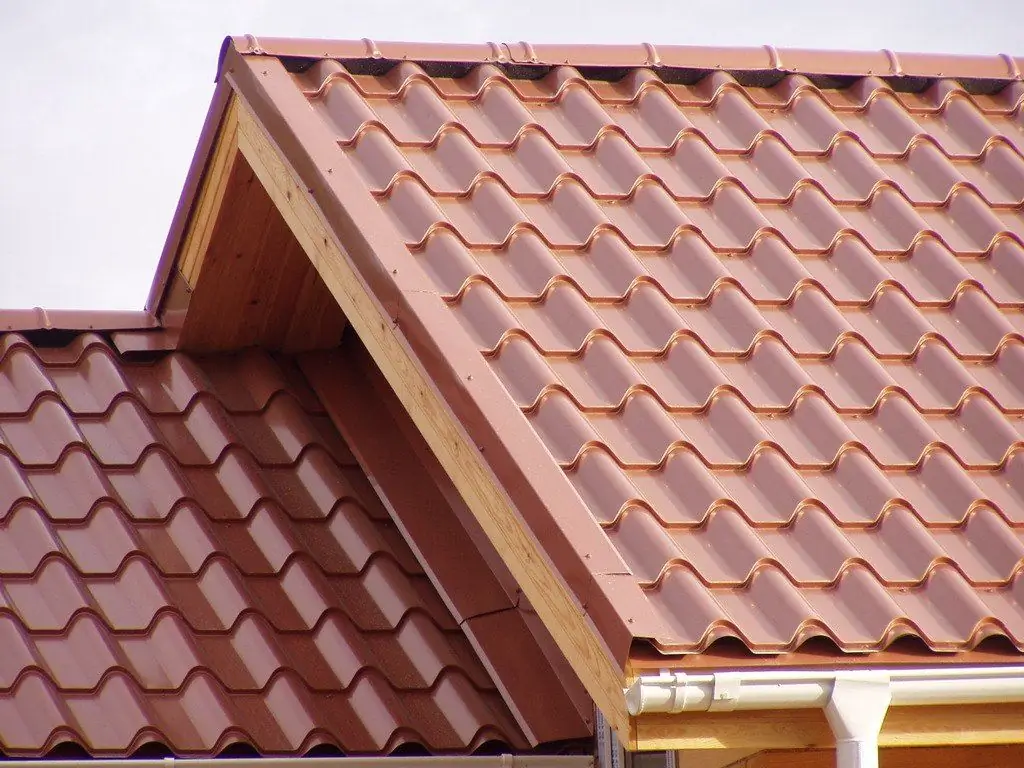
Methods and materials for the repair of metal roofing. What tool is needed and step-by-step instructions for eliminating roof breakages
Repair Of A Soft Roof, Including A Description Of Its Main Stages, As Well As Material And Tools For Work
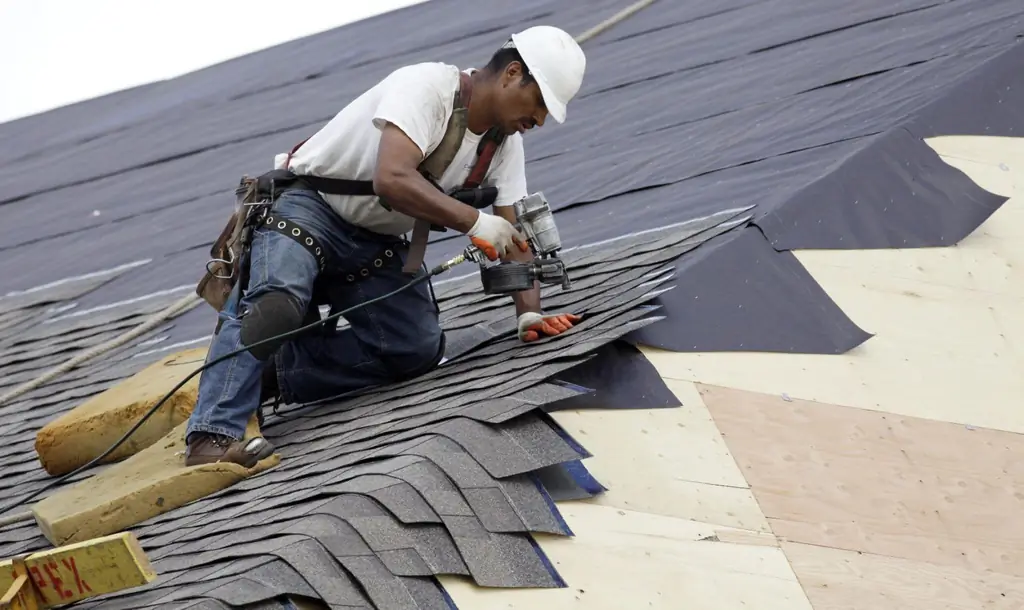
Diagnostics of the condition of the soft roof. Repair types and their main features. A brief overview of roofing materials and recommendations for their selection
Flat Roof Repair, Including A Description Of Its Main Stages, As Well As Material And Tools For Work
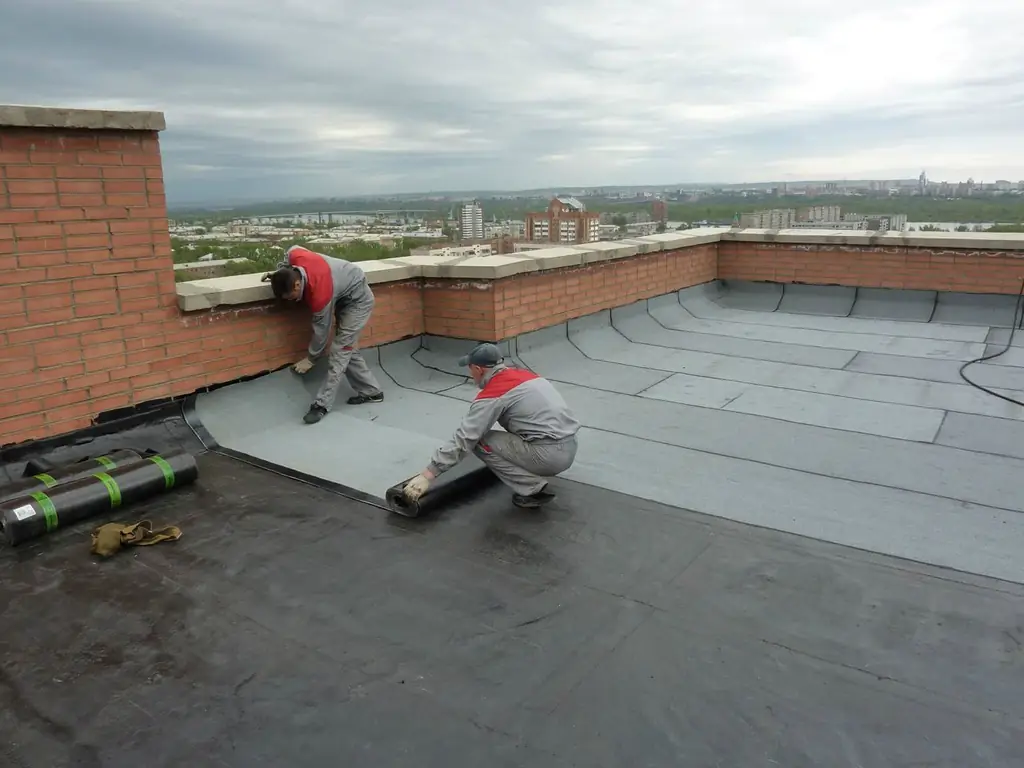
A brief description of the types of flat roof repair. Recommendations for the selection of roofing materials. Technology for eliminating various defects on flat roofs
Roof Repair, Including Its Various Types With A Description Of The Main Stages Of Work
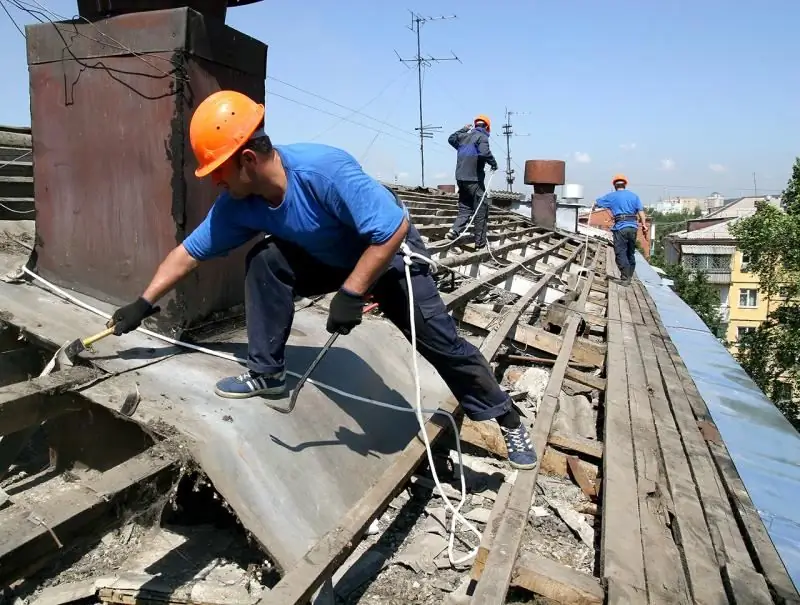
Features of various types of roofing pie repair. Required materials and tools. Step-by-step technology for repairing the main types of roofing
Repair Of The Overlaid Roof, Including A Description Of The Technology And Main Stages
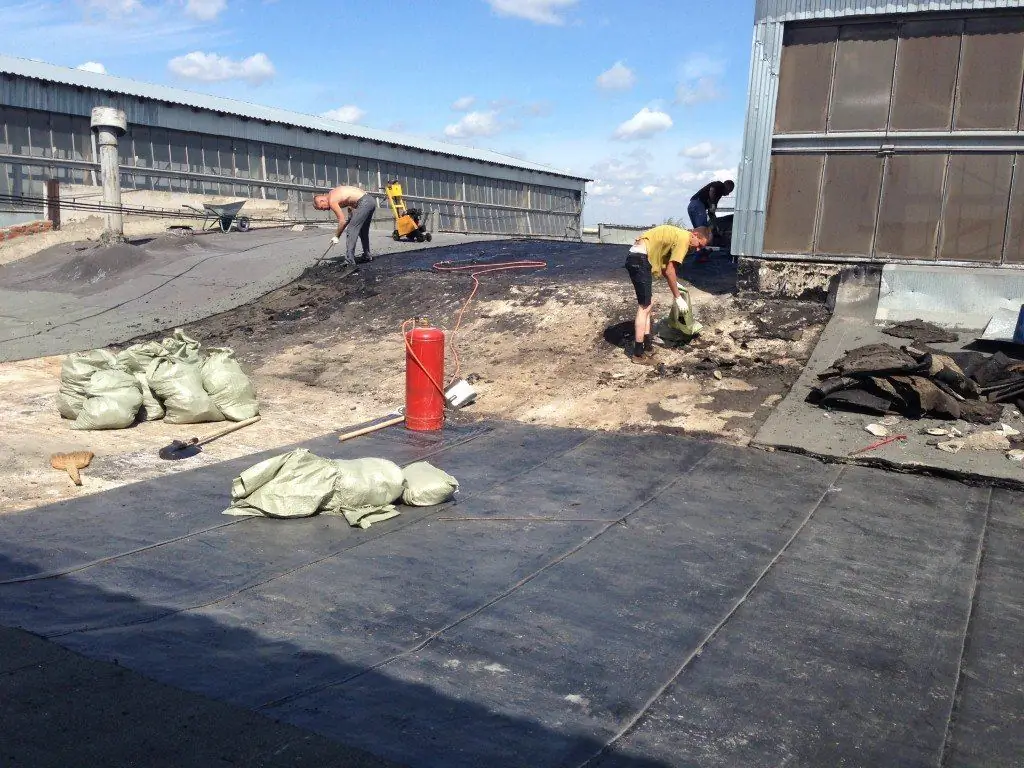
What defects arise during the operation of the deposited roof, the reasons for their occurrence and how to eliminate them. Repair of a roof made of deposited materials
